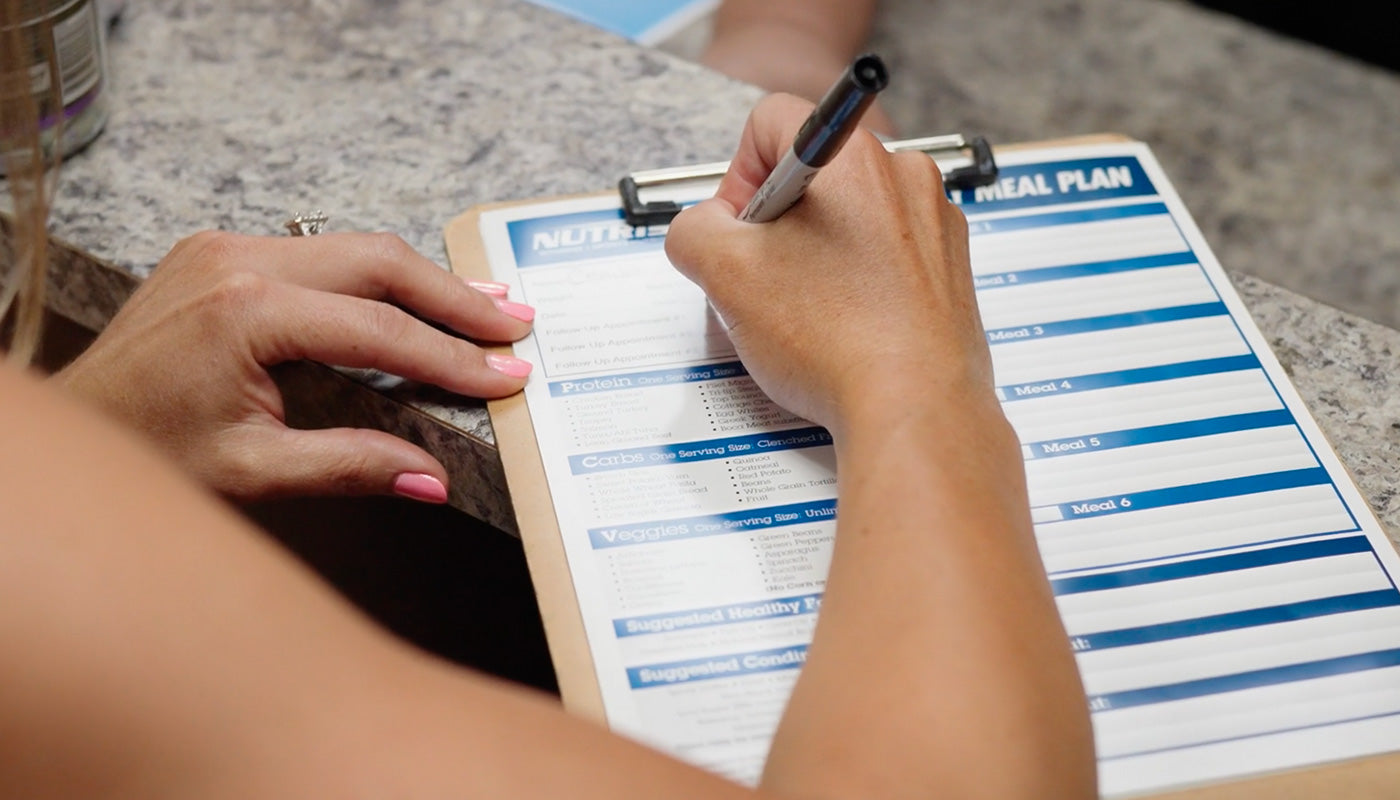When you start a fitness journey, you are making the conscious decision to surround yourself with like-minded individuals, create new routines, and even include places like NUTRISHOP® on your shopping list.
This also means you will be introduced to some new lingo.
I’m talking about THE “buzz word,” MACROS. Maybe you have heard the term “macros” spoken by fitness enthusiasts but felt too intimidated or embarrassed to ask, “What the heck are macros?!”
You can find article after article that goes into great detail about this awesome approach, but if you are a nutrition newbie, too much information on a new topic can be overwhelming.
Don’t worry. I’m going to introduce you to some bite-sized basics of the macro approach that will get you familiar with the term and serve as the foundation of your macro-counting journey.
What are macros?
Let’s strip this word of any intimidation it might carry.
- The word “macro” is short for macronutrients. Macronutrients make up calories and are the main building blocks of everything we eat. Macro means large, so we need to consume macronutrients in large quantities.
- The three main macronutrients are protein, carbs, and fats. They each provide a different number of calories and play a different role in our bodies.
For reference, 1g protein = 4 calories, 1g carb= 4 calories, 1g fat = 9 calories.
Let’s say a food label states that the food item has 100 calories. If you look at the total fat and it shows 2g fat, that means that 18 of those calories come from fat. (There are 9 calories in 1 gram of fat, the label shows there are 2 grams, 2x9 = 18). Now you see what is meant by “macros make calories.”
- The combination of the amount of protein, carbs, and fats that need to be consumed is different for everyone. These combinations are your magic numbers, YOUR macros. Sex, age, weight, height, activity level, and goals are all taken into consideration when calculating your magic numbers; your macros.
You can either calculate your macros using an online calculator or by working with a nutrition coach to ensure accuracy.
So, now you know! When people talk about macros, they’re simply referring to protein, carbs, and fats. When people say, “my macros” or “your macros,” they’re referring to the combination of macros they or you need to intake for #goals.
Why macros matter
All calories are not created equal! The old saying that “a calorie is a calorie” is extremely misleading and cheats your body from consuming the nutrients needed to build muscle and burn fat.
As you learned earlier, calories come from different macros that play different roles in our bodies, and we all need a specific combination of those three macros to reach our goals. So yes, it is crucial that we know where each calorie is coming from, and we can only do so if we track our macros.
Calorie counting takes a-one-size-fits-most approach: if you eat fewer calories, you lose weight; eat more calories, you gain weight. However, losing weight is not the same as losing fat. If you’re only counting calories, you won’t know if you are losing fat, water weight, muscle, or weight from those long bathroom breaks.
When you count macros, eating becomes intentional and rewarding.
Time to track
If you’re not already familiar with the app MyFitnessPal you will be once you decide to start counting macros.
MyFitnessPal is basically a huge food database. You can either scan the barcode of various foods or manually search for them in the app. The food will pop right up for you to choose a serving size, will break down the macros for you, and keep track of everything you input throughout the day. It will automatically add up the macros from each food and will show you how much of what macro you have left to reach your goal, if you have gone over a particular macro for the day, or if you are on track!
Tracking will also shift your mindset from seeing foods as “good” or “bad” to seeing them as their macro breakdown.
For example, you type in “Strawberry Frosted Dunkin Donut” and you see this: 3g protein, 32g carbs, 15g fat. MyFitnessPal does not say it is good or bad, it just reports the numbers, and you decide “if it fits your macros.”
Maybe Macros?
There you have it. Not too shabby, right?
Whether you are a nutrition newbie or have been working on nailing your nutrition for a while now, the macro approach is definitely worth trying.
Who knows, it might just be your gamechanger.
Extra, Extra! Get Your Macro-Friendly Fast Food Items Here!
Just a little side note to highlight the awesomeness of macro counting. Any fast food place can be macro-friendly if you try. Here are some fast-food restaurants that can fit your macros:
Chick-fil-A
- Grilled chicken sandwich
- Grilled nuggets
- Egg white grill
- Southwest chicken salad
Arby’s
- Jr. roast beef sandwich
- Prime-cut tenders
- Chopped salad with roast turkey
Jack in the Box
- Grilled chicken strips
- Egg white + turkey sandwich
- Club salad w/grilled strips
Taco Bell
- Soft chicken tacos
- Cantina Power chicken burrito
- Grilled breakfast burrito
Subway
- 6” any meat on wheat and easy on the cheese
Chipotle
- Everything is macro-friendly and itemized on MyFitnessPal!
– By Melissa López- MelLo Macros







